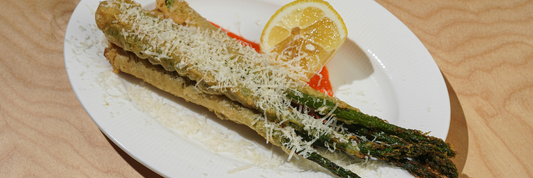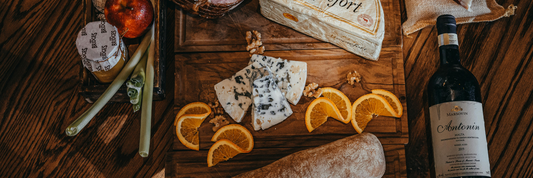Choosing the right cheese packaging size is key to keeping your products fresh, attractive, and cost-efficient. From mini cheese packs to large cheese blocks, the right portion size for cheese can enhance shelf life, reduce waste, and meet retail packaging standards.
In this guide, we’ll explore common cheese packaging sizes, how to select the right format for your market, and why sustainable, well-sized packaging matters for every cheesemaker and retailer.
- How to Pack Cheese the Right Way
- Eco-Friendly Cheese Packaging: Guide to More Sustainable Cheese Packaging
- How to Wrap Cheese Properly at Home
Why Cheese Packaging Size Matters

Cheese packaging size isn’t just about how much product fits in a box, it shapes freshness, cost, and how customers perceive your brand. Whether you sell artisanal wedges, deli blocks, or snack packs, choosing the right portion ensures the cheese reaches consumers in optimal flavor and condition.
Balancing Freshness, Cost, and Convenience
Smaller packages keep cheese fresher and reduce spoilage. Larger blocks, on the other hand, minimize packaging material and storage costs. Finding the right balance between convenience and efficiency is essential for profitability.
Shelf Life and Waste Reduction
Properly sized portions reduce exposure to air and moisture, extending shelf life. Oversized packaging often leads to waste, while undersized ones increase handling frequency.
Consumer Perception and Brand Positioning
Packaging size affects how customers see your brand. Mini packs signal premium snacking; family blocks suggest everyday value. Smart sizing helps define your target audience before they even read the label.
Optimizing Logistics
Choosing standard sizes simplifies inventory and shipping. It also allows for stackable, uniform packaging that reduces carbon footprint during transport a win for both your brand and the environment.
Understanding Portion Sizes for Cheese
Portion size varies across the cheese supply chain from retail snacks to catering trays. Here’s how the most common formats are structured.
Standard Single-Serve Portions (20–50 g / 0.7–1.7 oz)
Perfect for on-the-go snacking, tasting events, or café pairings. Examples include Babybel rounds, individually wrapped cheddar cubes, or 25 g goat cheese bites.
Retail Packs (100–250 g / 3.5–8.8 oz)
The most common supermarket format. These offer convenience without sacrificing shelf stability. Great for sliced, cubed, or vacuum-sealed wedges.
Family and Catering Packs (500 g–1 kg / 1.1–2.2 lb)
Designed for households or restaurants using cheese daily. These larger portions optimize storage and reduce outer packaging use.
Nutritional & Labeling Considerations
For compliance, nutrition facts must reflect serving sizes accurately. Portion control also helps customers track calories and fat content, reinforcing brand transparency.
Price Positioning
Smaller packs command higher price per gram, fitting premium brands. Larger packs emphasize value and efficiency ideal for supermarkets or wholesale channels.

Common Cheese Packaging Size Categories
Retail Cheese Packaging Sizes
- 100 g / 3.5 oz – Standard snack wedge or sliced pack.
- 200 g / 7 oz – Balanced option for individual households.
- 250 g / 8.8 oz – Common for specialty and premium cheeses.
- 500 g / 1 lb – Family or restaurant-ready size.
Retail packaging can be vacuum-sealed, resealable, or MAP (modified atmosphere packaging) to prevent oxidation.
Shape also matters: wedges for aesthetics, slices for convenience, cubes or tubs for snacking appeal.
Cheese Block Sizes (Wholesale / Industrial)
Cheese blocks are standard in foodservice and industrial manufacturing.
| Block Size | Approx. Weight | Common Use | Notes |
|---|---|---|---|
| 2.5 kg / 5.5 lb | Restaurants, delis | Easy to cut manually | |
| 5 kg / 11 lb | Small processors | Standard for medium volume | |
| 10 kg / 22 lb | Industrial slicing, grating | Reduced packaging cost | |
| 20 lb (9.07 kg) | U.S. Mozzarella standard | Ideal for pizza and processed cheese plants |
Larger blocks reduce handling and packaging waste but require refrigeration consistency.
Mini Cheese Packs (25–50 g / 0.9–1.7 oz)
Mini cheese packaging is gaining popularity for portion control and convenience.
- 25 g / 0.9 oz: tasting boxes, wine pairings, cafés
- 35–40 g / 1.2–1.4 oz: school snacks and meal kits
- 50 g / 1.7 oz: mini Brie wheels or Babybel-style rounds
Mini packaging is also perfect for subscription boxes or gift samplers.
(Pair these with paper cups for a sustainable unboxing experience.)
Packaging Standards and Industry Guidelines
The cheese industry follows defined packaging norms that ensure accuracy, hygiene, and compliance.
Global Standards
- FDA (U.S.) and CFIA (Canada) require net weight to be displayed in both metric and imperial.
- Codex Alimentarius outlines labeling standards for cheese type, fat content, and weight accuracy.
Weight Tolerances
Retail cheese packages must stay within ±1–2 % of declared weight to meet labeling laws.
Recommended Sizes by Cheese Type
- Soft cheeses: 125 g (4.4 oz) or 250 g (8.8 oz) tubs
- Hard cheeses: 200–500 g (7–17.6 oz) vacuum blocks
- Processed cheese slices: 150–250 g (5–9 oz) packs
Case Study: Mozzarella Blocks
In North America, mozzarella is commonly produced in 20 lb (9 kg) blocks. These are then shredded or portioned for retail bags, reducing labor at the restaurant level.
Sustainable & Hygienic Packaging
MAP, vacuum sealing, and compostable wraps now dominate modern cheese packaging. These methods extend shelf life while reducing single-use plastics.
Choosing the Right Cheese Packaging Size for Your Market
Selecting the correct packaging size depends on how your cheese reaches consumers.
Retail vs Foodservice
Retail cheese packaging focuses on branding and convenience. Foodservice packaging emphasizes durability, storage efficiency, and cost per kilogram.
Logistics Considerations
Storage temperature, stacking capacity, and shipping method influence size decisions. Uniform dimensions simplify cold-chain management and reduce spoilage.
Consumer Convenience vs Cost
While smaller sizes attract quick buyers, larger blocks lower per-unit costs. Striking a middle ground enhances both accessibility and profitability.
For Artisan Cheesemakers
Smaller brands benefit from custom mid-size packaging around 150–300 g (5–10 oz). It feels premium yet manageable, perfect for farmers’ markets and online delivery.
Eco-Friendly Packaging Options by Size
Eco-packaging is now central to modern cheese branding. Beyond visual design, it signals environmental commitment and consumer trust.
| Pack Size | Eco-Friendly Option | Best Use Case |
|---|---|---|
| 20–50 g (mini) | Biodegradable cups, paper wraps | Snacks, tastings |
| 100–250 g | Compostable film, recyclable trays | Retail wedges |
| 500 g–1 kg | Kraft cartons, sealed paper wraps | Family packs |
| 2.5–10 kg | Corrugated foodservice boxes | Wholesale, catering |
Transitioning from plastic to paper-based or compostable materials supports both sustainability goals and regulatory compliance.
Innovations and Future Trends in Cheese Packaging
The dairy sector is rapidly evolving with smart, sustainable, and flexible packaging technologies.
Smart Labeling
QR codes now deliver farm-to-table transparency, showing origin, nutrition, and freshness. Some labels even use color sensors to indicate spoilage.
Portion-Controlled Snacks
Mini cheese sticks, cubes, and crackers cater to on-the-go consumers. Portion-sized packaging reduces waste while supporting dietary awareness.
Minimalist & Eco Design
Clean typography, recyclable sleeves, and kraft tones are trending in modern dairy branding signaling authenticity and simplicity.
Flexible vs Rigid Packaging
Flexible films and pouches lower transportation costs and adapt to irregular cheese shapes, while rigid trays maintain premium shelf presentation.
FAQs on Cheese Packaging Sizes

What are standard retail cheese packaging sizes?
Most retail cheeses come in 100 g, 200 g, and 250 g packs (3.5–8.8 oz).
What is the typical block size for wholesale cheese?
Common blocks weigh 2.5–10 kg (5–22 lb). The U.S. mozzarella standard is 20 lb (9 kg).
How many grams is a single portion of cheese?
A single serving is typically 30 g (1 oz).
Are there global standards for cheese packaging weights?
Yes, CFIA, FDA, and Codex define net content tolerances and mandatory labeling.
How do I choose the best cheese packaging for my brand?
Base it on your sales channel retail, wholesale, or catering and target audience convenience.
What’s the smallest cheese pack size for sampling or gifts?
Mini cheeses range between 20 g and 40 g (0.7–1.4 oz).
What are sustainable options for mini cheese packs?
Biodegradable paper wraps, PLA film, and compostable paper cups.
How does packaging size affect cheese shelf life?
Smaller packs reduce oxidation and moisture exposure, preserving texture and flavor longer.
Conclusion: Size Smart, Package Sustainably
In cheese production, the right packaging size is a business advantage. It defines freshness, simplifies logistics, and shapes how customers experience your brand.
From bite-size minis to industrial blocks, every format serves a purpose, the key is matching size to your market and sustainability goals.




